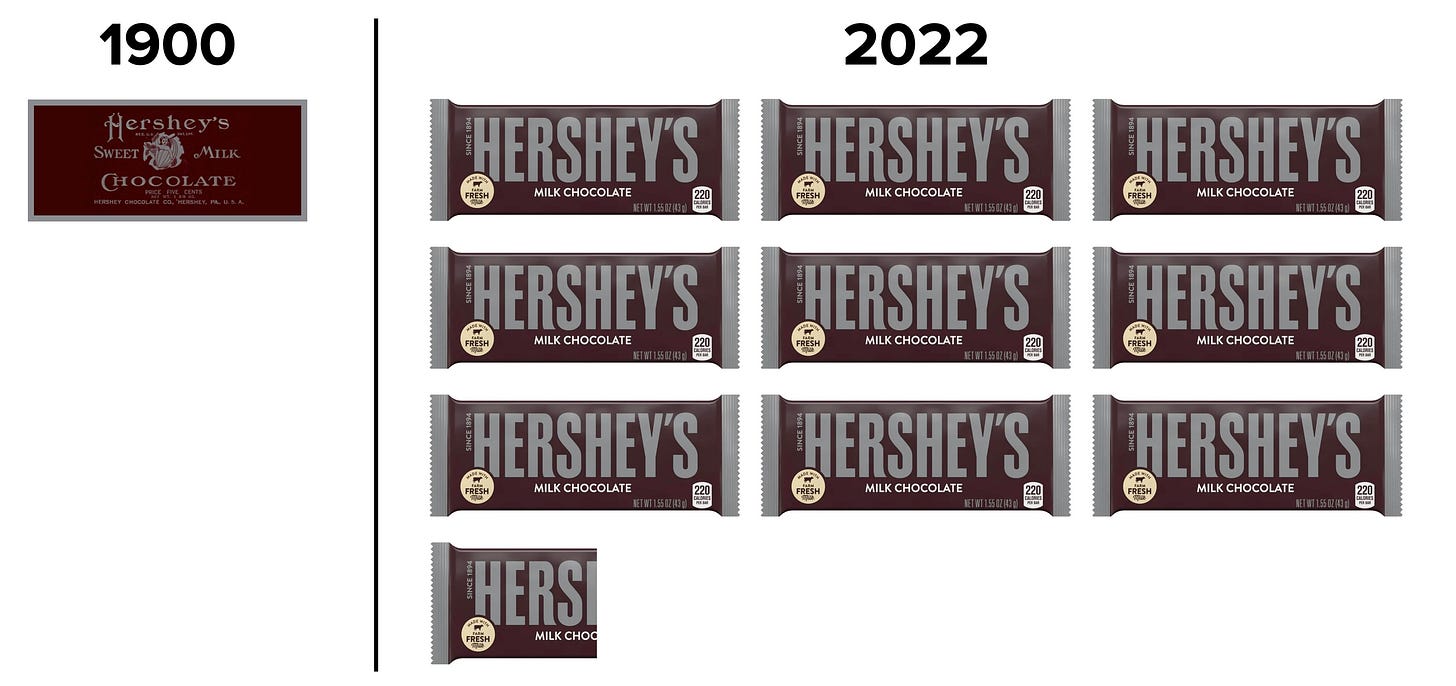Hershey Bars on Sale: Buy One Get 8.5 Free
Since 1900, the time price of Hershey Chocolate Bars has fallen by 89.5 percent.
Around 1875, Daniel Peter and Henri Nestlé created the first milk chocolate in Switzerland. Milk chocolate was a luxury item for the rich for the next 25 years. It was the American Milton Hershey who figured out how to make milk chocolate abundant with mass production techniques. He’s the Henry Ford of candy. In 1900 he introduced his chocolate bar priced at 5 cents. It remained at this price until 1969.
According to measuringworth.com, in 1900 unskilled workers earned 9 cents an hour while blue-collar workers earned around 14 cents an hour. This would make the time price for unskilled workers 33 minutes and 21 minutes for blue-collar workers.
Today you can pick up one of these bars for $1.15 at your local Walmart or Target. Unskilled wages are now closer to $15.25 an hour and blue-collar hourly compensation is around $35.06 per hour. This would put the time price for unskilled workers at 4.5 minutes and 2 minutes for blue-collar workers. The time price has decreased by 86.4 percent for unskilled workers and 90.8 percent for blue-collar workers. For the time it took to earn one Hershey bar in 1900, unskilled workers would get 7.4 in 2022 and blue-collar workers would get 10.9.
Population in the U.S. increased by 338 percent from 76 million in 1900 to 333 today. Over this same period, personal chocolate abundance increased by an average of around 851 percent, over 2.5 times faster than population.
In 1900 at a time price of 26 minutes it would have taken 33 million hours of work to earn the money to buy every person in the U.S. a Hershey’s bar. By 2020, with population increasing by 257 million, it would only take 15.2 million hours. We grew population by 338 percent and reduced the time to give everyone a treat by 54 percent. Quite the accomplishment. Here is another way to look at the growth in milk chocolate abundance in the U.S. The red box represents the size of the population level chocolate bar abundance in 1900. It is overlaid on the green box which represents 2022. Note that abundance grew in two dimensions.
Population level abundance is equal to personal abundance multiplied by population size. From 1900 to 2022 personal chocolate bar abundance increased by a factor of 9.51 or 851 percent while population increased by a factor of 4.38 or 338 percent. This would indicate that population level chocolate bar abundance in the U.S. increased by a factor of 41.67 or 4,067 percent. Population level chocolate bar abundance grew at a 3.1 percent compound annual growth rate, doubling in abundance every 22.7 years.
Elasticity in economics measures the change in one variable compared to the change in another variable. From 1900 to 2022 a one percent increase in population corresponded to a 2.52 percent increase in personal chocolate bar abundance and a 12.03 percent increase in population level chocolate bar abundance.
Thank you Milton Hershey and the millions of other confectionary entrepreneurs for making life a box of chocolates.
You can learn more about these economic facts and ideas in our new book, Superabundance, available at Amazon. Jordan Peterson calls it a “profoundly optimistic book.”
Gale Pooley is a Senior Fellow at the Discovery Institute and a board member at Human Progress.








